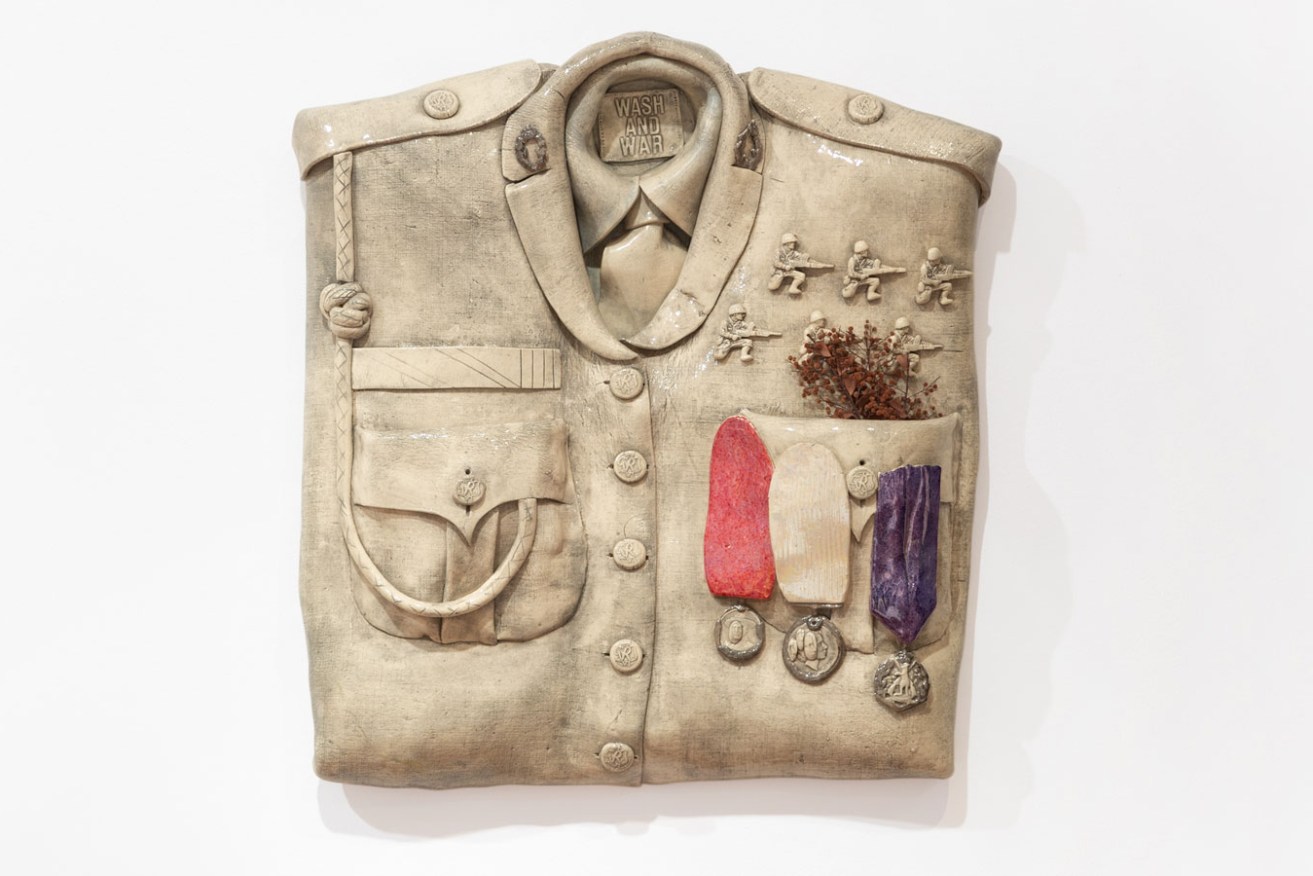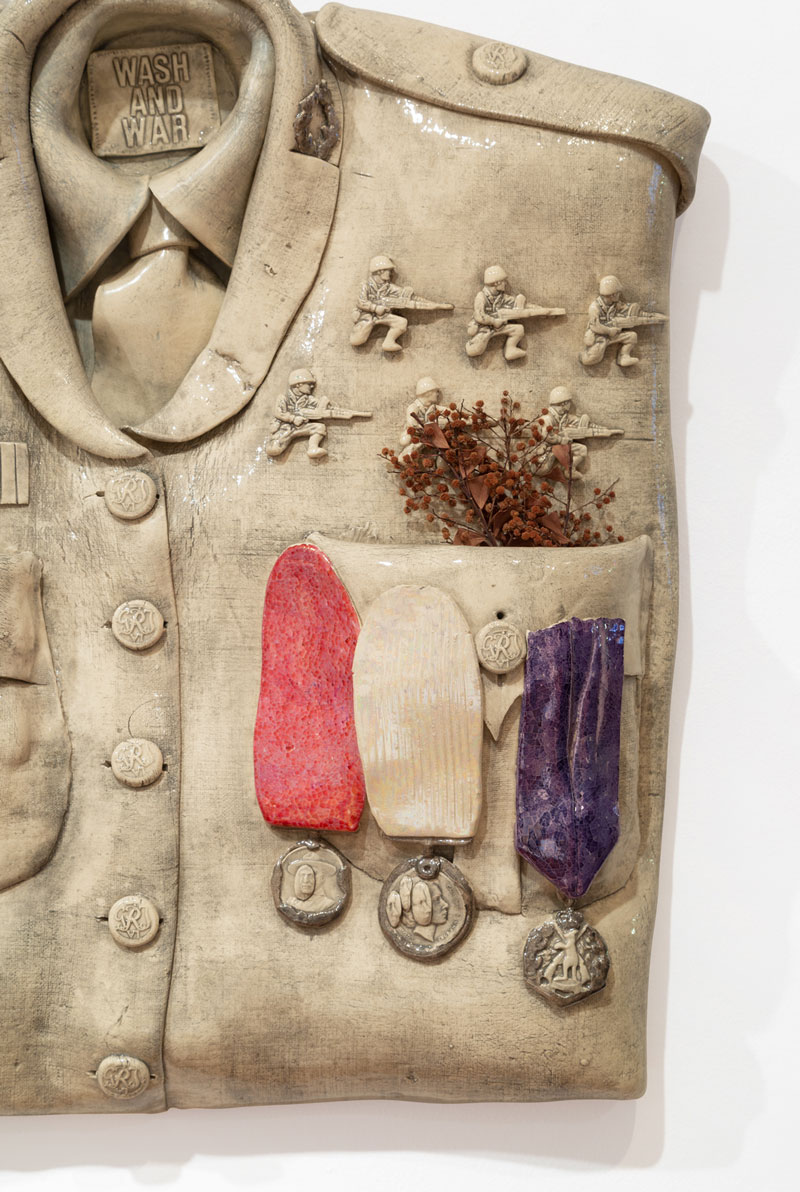Artwork highlights Australia’s changing attitudes to war
Created in the shadow of the Vietnam War and at the height of the Funk art movement, Adelaide-based artist Olive Bishop’s Wash and War will be in the spotlight at the Art Gallery of South Australia on ANZAC Day.

Olive Bishop’s 'Wash and War', 1977, earthenware, 48.0 x 45.0cm; South Australian Government Grant 1977; Art Gallery of South Australia.
Wash and War, 1977, from the Art Gallery of South Australia’s collection, is part of a larger series of clay uniforms by Olive Bishop which explores the Australian public’s changing attitude to war in the last half of the 20th century.
The 1960s and 1970s were a time of great social and political change, overshadowed by the Vietnam War. Just as Australians had been called on to fight in World War I and II, now a third generation was being asked to take on active duty overseas.
The implementation of conscription through the so-called birthday ballot was highly controversial and prompted the greatest social and political dissent in Australia since the conscription referendums at the time of World War I. Public sentiment turned against the war, leading to Australia’s withdrawal and the end of the conscription in 1972. It was within this social and political context that Bishop began her career.

Olive Bishop’s Wash and War (detail).
As a young woman in the ’60s and ’70s, Bishop spent her formative years living in a society that was questioning the implications of war. The title of this work, Wash and War, plays on the phrase “wash and wear”. Through the work, Bishop examines the endless cycle of war, its repercussions and aftermath.
To “wash and wear” suggests a cycle of use and re-use; this shirt is clean and neatly folded, the stains of war washed away. Separated from the person who wore it, the nameless uniform could be seen as removing individuality from the wearer, making them a faceless cog in the war machine. The work asks: “What, then, did the war achieve? At what cost? And is it inevitable that the cycle of war will continue?”
The “Funk” movement in ceramic art also emerged out of this social and political context. Starting in San Francisco in the US, it saw ceramic artists turn away from creating functional objects. Instead they made works that often carried an underlying satirical meaning or social commentary, and explored previously taboo subjects such as politics and religion.
Sometimes irreverent, perverse, or grotesque, Funk artists used clay to create everyday objects, their meaning becoming ambiguous.
Within Australia, Adelaide became the centre of the Funk art scene. In 1968, the Art Gallery of South Australia held an exhibition of Adelaide Funk ceramics, with then gallery director Daniel Thomas referring to the works as “Skangaroovian Funk” (a composite of South Australia and Kangaroo). As it captured the movement’s quirky quality, the term stuck.
Bishop was one of these Skangaroovian Funk artists. Highly influenced by the Funk movement and its ability to hold layers of meaning, Bishop created jackets that played on different elements of society, including the Wash and War series. By taking the military uniform and rendering it in clay, she gave the garment new meaning, while asking the viewer to reflect on the futility of war and its intergenerational impact.
Wash and War is currently on display in Gallery 6 at AGSA, and visitors can learn more about the work in a free Tuesday Talk at AGSA on ANZAC Day (April 25) with Rebecca Evans, AGSA curator of Decorative Arts and Design.
Ingrid Goetz is the Vernon-Roberts assistant curator of Decorative Arts & Design at the Art Gallery of South Australia. This article is part of InReview’s Off the Wall series, in which AGSA curators offer an insight into specific works or displays at the gallery.




